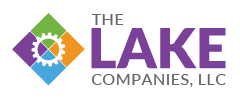WARNING TO ALL MANUFACTURING COMPANIES: Filling factory jobs entering the danger zone
I am in the business of making companies stronger. My company can help them lower costs, maximize production, improve customer relations, increase revenues, and boost efficiency. You might say we give companies an unfair advantage over their competition. But with all the skills and experience we bring to the table, we can’t help you with an aging workforce. Don’t get me wrong, I’m no spring chicken myself.
If you look around your factory shop floor, you may have noticed an aging workforce. One of the anomalies of the job market today is the large number of high-paying manufacturing jobs that remain unfilled while some 10.9 million Americans are out of work. According to the Manufacturing Institute’s most recent “skills gap” report, as many as 600,000 U.S. manufacturing jobs remained vacant across the United States due to shortages of skilled workers. Others place the number higher. A U.S. Chamber of Commerce report, titled “Help Wanted 2012: Addressing the Skills Gap,” said there were “more than 3 million (unfilled) jobs.”
So why are there so many unfilled jobs?
“It starts with perception,” says Timm Johnson, Chairman of the Education and Workforce Development Committee. “I think many people have a negative view toward manufacturing: dirty jobs, tall smoke stacks and hot factories.” Mr. Johnson says those are antiquated stereotypes from the past. “Anyone who’s been inside a manufacturing facility [today] knows it’s an environment filled with cutting-edge technology that requires skill and training to work. But that’s part of the problem — people don’t know what it’s like because they’ve never been inside a plant.”
Others blame a slow economy. “Companies often don’t fill ‘open positions’ that they theoretically are trying to fill because they don’t want to be carrying people they don’t absolutely need — just in case,” says Harold L. Sirkin, professor at Northwestern University’s Kellogg School of Management. “The actual number of true vacancies is less than advertised.”
There is also what Mr. Sirkin calls the temporary fix of requiring more hours of your existing workforce. “When more help is needed, management often makes do by offering existing employees more overtime, which gives them the flexibility of more capacity, without having to hire more workers.”
Mr. Sirkin goes on to say that companies no longer seem to be willing to invest in employee training. “Workers just don’t walk into manufacturing plants and start working, even if they’re highly experienced. They need training. Unfortunately, however, many companies cut training programs when the financial crisis hit, and they haven’t reinstated them.”
Sirkin points to an aging generation of workers where the average age is 56. “Now is the time to train the next generation. With thousands, if not millions, of unemployed and underemployed college graduates now living in group homes, or with their parents, we’d be foolish not to recognize this as a tremendous talent asset. Now is the time to recruit them, train them and create the skilled workforce U.S. manufacturers will need as the baby boomers retire.”
A USA Today report by Richard Haass, president of the Council on Foreign Relations and Klaus Kleinfeld, chairman and CEO of Alcoa, say American education is a hot button. “Today’s manufacturers often rely on precision machinery, computer modeling and high-tech tooling far removed from the traditional assembly line, and too few American students are prepared for these skilled, internationally competitive jobs. U.S. high schoolers ranked 23rd in science and 31st in math on recent international skills tests — about on par with Hungary and behind Slovakia and Poland. If the United States is to remain economically competitive, it must do a better job educating its children.”
Timm Johnson says, “Let’s start engaging kids in grade school and emphasizing mathematics and science — the foundations they’ll need to pursue a career in high-tech industries such as manufacturing, packaging, engineering and others.” He points to organizations such as JumpStart representing companies in Milwaukee and Minneapolis, and Project Lead The Way that are helping to lead these efforts.
“The goal is to engage students, parents and school administrators to demonstrate career opportunities within the industry.”


Comments are closed.